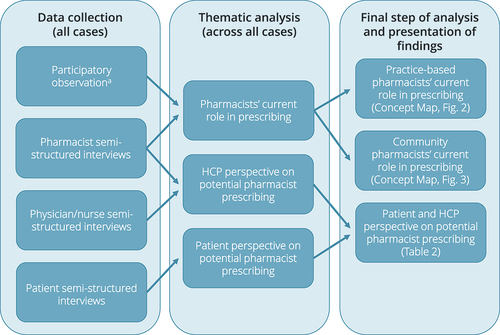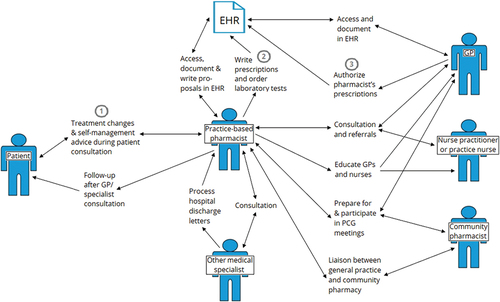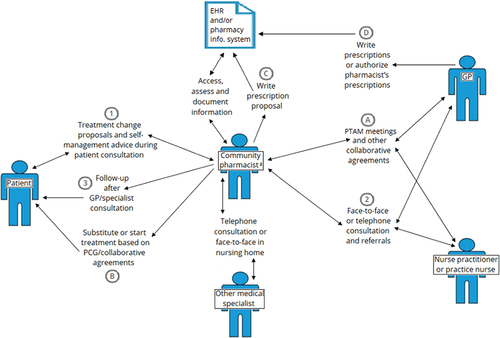Figures & data
Figure 1. Data collection and analysis methods to explore the pharmacists’ current roles and potential for prescribing and how the findings are presented in this article.

Table 1. Case and participant characteristics.
Figure 2. Concept map of the practice-based pharmacists’ current roles in prescribing, with the tasks, processes, and contacts in relation to the different interacting stakeholders and systems. The pharmacists’ most prominent role in prescribing was (1) making treatment changes during patient consultation, and then (2) writing prescriptions in the EHR system (3) for the GP to authorize. EHR, electronic health record; GP, general practitioner; PTAM, pharmacotherapy audit meeting.

Figure 3. Concept map of the community pharmacists’ current roles in prescribing, with the tasks, processes, and contacts in relation to the different interacting stakeholders and systems. The pharmacists’ main roles in prescribing seemed (1) making treatment change proposals during patient consultation (2) for which the GP often was consulted to make treatment decisions that were then (3) reported back to the patient, and (A) collaborative agreements with GPs that allow (B) pharmacists and patients to decide on starting or substituting medications in specific situations. In those situations, (C) the pharmacist writes a prescription (D) for the GP to authorize. aDelegated to pharmacy assistant in case of less complex or routine situations. EHR, electronic health record; GP, general practitioner; PTAM, pharmacotherapy audit meeting.

Table 2. Themes, sub-themes, and categories related to the patient and healthcare professional perspectives on pharmacist prescribing.
